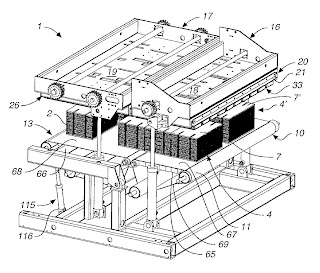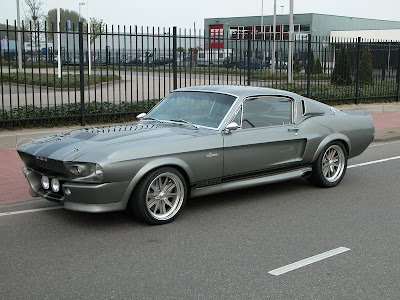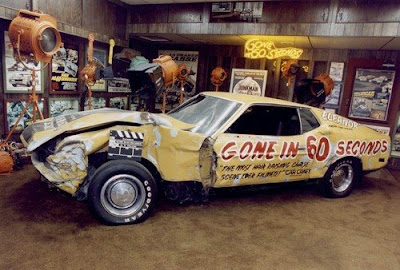
A recent New York case explores a trademark licensor’s tort liability for defective merchandise, but with a twist: the licensor is a wholly-owned trademark holding company. The biggest lesson from the case is “get the left hand talking to the right.” Here, a low-probability, ultimately unsuccessful defense in a tort case only succeeded in providing fodder for future attacks on a valuable trademark.
In 1996 Scotts exclusively licensed Home Depot to sell Scotts-branded lawnmowers manufactured by co-defendant Murray, Inc. The Scotts trademarks were subsequently assigned from The O.M. Scott & Sons Company to OMS Investments, Inc., a wholly-owned trademark holding company subsidiary, in 1998. In 2001 OMS Investments entered into a second licensing agreement with Home Depot for the sale of lawnmowers and a separate agreement with Murray for their manufacture. The OMS-Murray manufacturing agreement said that OMS or “a third party” was authorized to conduct inspections and the case details that Scotts was a very active participant in the design and manufacturing of the lawnmowers.
Homeowners purchased a Scotts-branded lawnmower. The lawnmower ignited a fire in the homeowners’ attached garage and the house suffered fire damage. Homeowners sued The Scotts Company and Murray, Inc. on various product liability theories, the insurance company paid the claim, and the insurance company was substituted as plaintiff.
McCarthy states that “In general, it is accurate to conclude that there is a very substantial risk that a trademark licensor or franchisor will be held liable for the torts of licensees and franchisees.” McCarthy § 18:74. Nevertheless, Scotts moved for summary judgment on two theories: that Scotts was the wrong party in interest since OMS was the trademark licensor; and that OMS, or alternatively Scotts, was a “mere licensor” and not liable under New York tort law.
For those interested in the topic, this case is a thorough study of New York law on tort liability of licensors. Briefly, a trademark licensor will be liable on a strict liability theory for a defective product where the licensor participates substantially in the design, manufacture, or distribution of the licensed products. While a licensing relationship per se is not enough, the licensor can be liable where there is the capacity to exercise control over product quality or distribution of a defective product. While the Scotts court acknowledged that, in theory, the licensor may escape liability where the “trademark ownership or registration ‘may indicate nothing more than the fact that the registrant had a marketing idea or concept . . .’,” the court stated that, in general, a program to avoid abandonment through naked licensing is sufficient to establish enough involvement for tort liability. The court had no sympathy that a licensor may not be able to insulate itself from strict liability claims:
Exposing the trademark licensor to strict products liability proportional to the degree it polices its mark through rigorous quality assurance policies, including oversight of product design, also prevents the licensor from becoming an economic ‘free rider,’ obtaining the benefits of consumer confidence in the mark, manifested by increased sales and associated royalties, while sidestepping potential strict products liability claims that may arise where compliance with such quality assurance policies prove imperfect.
As described in detail in the case, Scotts was intimately involved in the production of the lawnmowers, so playing a shell game based on trademark ownership to try to avoid liability promised to be a lost cause. Scotts instead paid what might turn out to be a high price for making an argument with a low likelihood of success, since the decision puts the validity of the trademarks into question.
The first mistake was right out of the box – Scotts admitted in the Answer that it was the licensor of the Scotts mark (“Admit to the allegation set forth in Paragraph 10 of the Complaint that Scotts licensed the subject lawnmower, and denies the remaining allegation set forth therein.” Answer here). When Scotts then tried to argue on a motion for summary judgment that it wasn’t liable because OMS Investments was the actual owner of the marks the plaintiff insurance company cried foul and Scotts abandoned the argument. So, the answer alone casts doubt on the actual ownership of the trademarks; Scotts itself doesn’t appear to recognize that it is merely a licensee of marks. (Shameless self-promotion – see a discussion of the risks of placing trademark ownership in a wholly-owned subsidiary in Pamela S. Chestek, Control of Trademarks by the Intellectual Property Holding Company, 41 IDEA 1 (2001)).
But the court goes on to do some more damage of its own. Even though it found that Scotts made a binding admission that it was the licensor, as court’s are wont to do it discussed alternative theories for finding that Scotts is the true trademark licensor. It questioned the legitimacy of the trademark holding company (“OMS is a wholly-owned subsidiary of Scotts with no other business purpose apparent from the record except to hold and license the Scotts mark”), that Scotts, not OMS, actually controlled the mark (“the record is replete with other evidence that Scotts’s quality control personnel actively exercised such quality control authority by regularly visiting Murray’s manufacturing facilities and reviewing Murray’s quality control processes and records to assure Murray’s compliance with Scotts’s quality control requirements and recommendations with the intent to police and protect the Scotts trademark”), and suggested piercing the corporate veil (“Plaintiff’s allegations, charging Scotts as the licensor of the trademark lawnmower, are broad enough, subject to proof at trial, to include imposition of liability against Scotts based on the corporate alter ego doctrine, such that OMS’s status as Scotts’s wholly-owned subsidiary may be disregarded by the jury in determining which entity was, in fact, responsible for the licensing of the Scotts trademark to Murray.”). The court concluded that
a reasonable juror could find that Scotts, not OMS, was the de facto or actual licensor of the Scotts trademark applied by Murray to the lawnmower manufactured by Murray and sold by Home Depot . . . .
Of course if Scotts, not OMS, is the “de facto” or “actual” licensor of the trademark, OMS is not the owner of the trademarks. Any applications or maintenance action filed by OMS, if it wasn’t the true owner, were fraudulent. All may not be lost if Scotts is still the owner of common law rights, but the decision is an invitation to attack the validity of a conceptually weak surname trademark in the future.
The decision also risks the tax benefits deliberately created through Scotts’ use of a trademark holding company vehicle. Intellectual property holding companies are generally set up for tax reduction purposes, but the holding company has to have a legitimate business purpose other than tax avoidance. Here, the court questioned the business purpose of the holding company and highlights in excruciating detail that the parent company, Scotts, is really performing all the activities that are normally used to explain the business purpose of a trademark holding company.
Further, one of the business justifications for the use of a trademark holding company is to protect trademarks from a parent company’s liabilities. Sherwin-Williams Co. v. Commissioner Of Revenue, 438 Mass. 71, 75, 778 N.E.2d 504, 509-10 (Mass. 2002). Rather than protecting the trademarks from risk, though, here the defense tactic, claiming that OMS was the real party-in-interest, put the trademarks right in the firing line.
A Hail Mary attempt to slip through the thinnest of cracks in tort law liability puts the validity of the crown jewel trademarks, not to mention a company’s tax strategy, at risk. Automobile Ins. Co. of Hartford Conn. v. Murray, Inc., 571 F. Supp. 2d 408 (W.D.N.Y. 2008).
© 2008 Pamela Chestek







